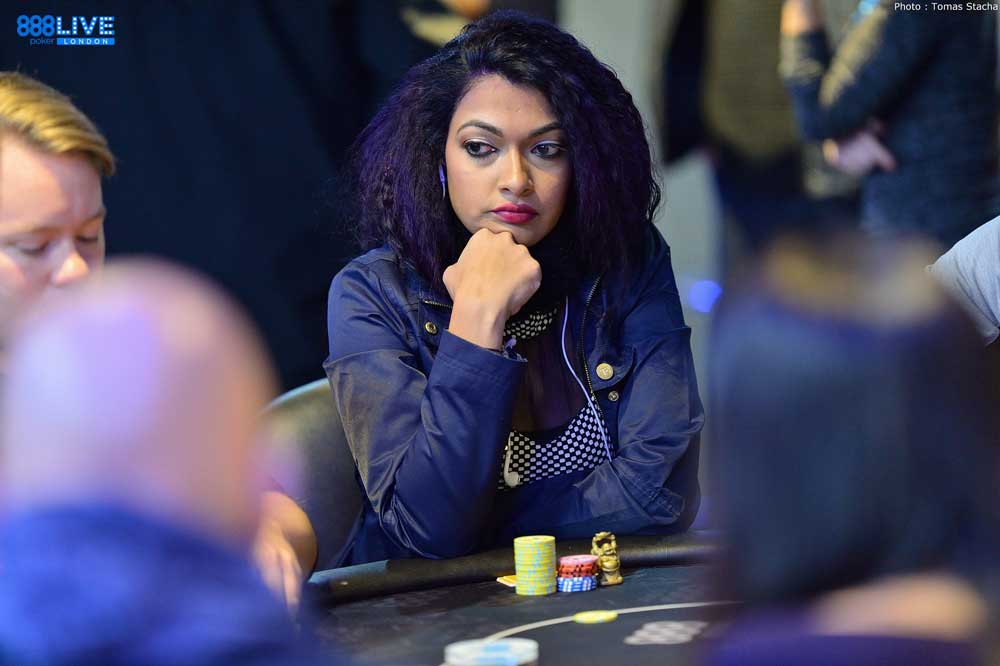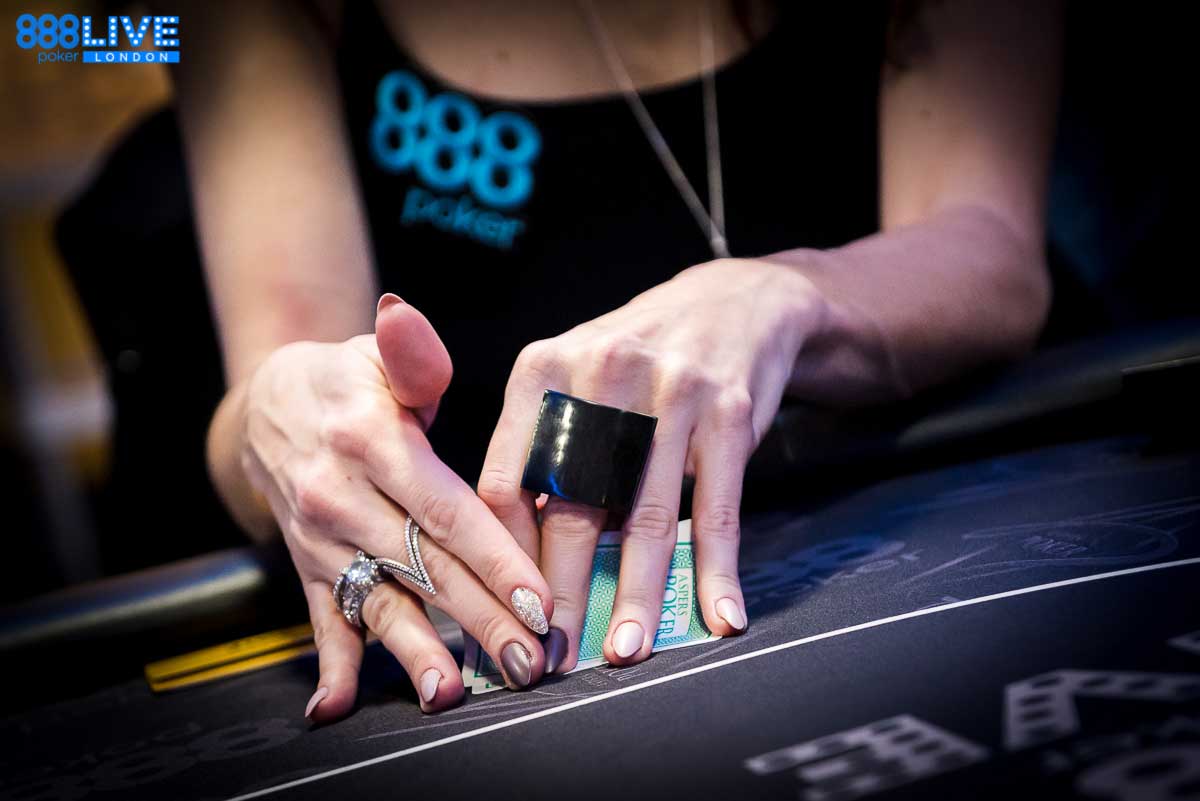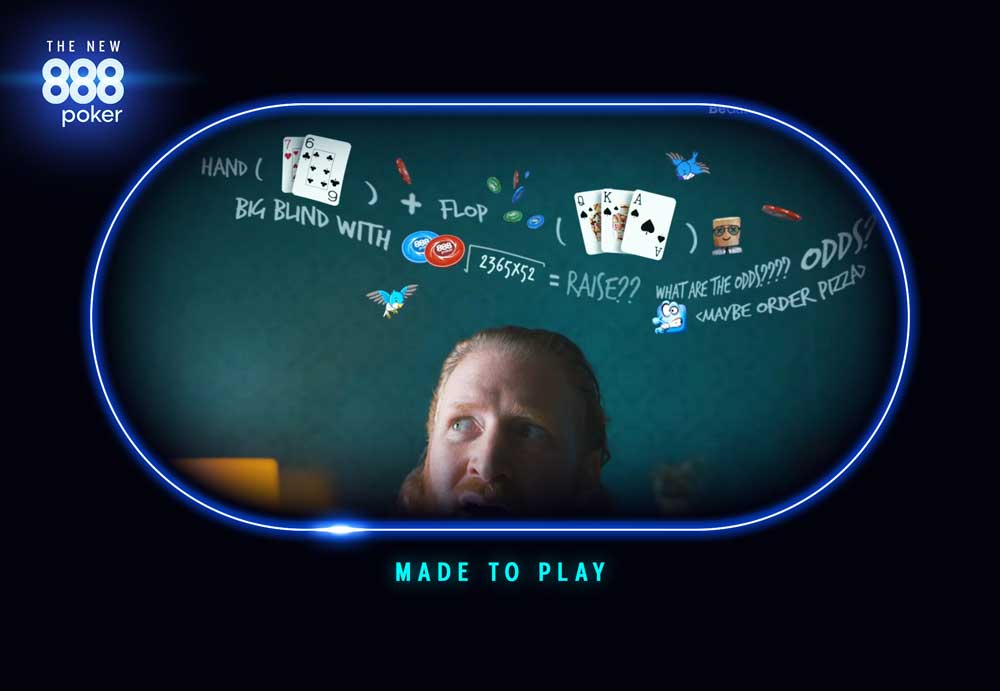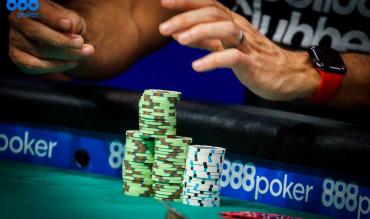A tell in poker is anything that gives away information about our opponent’s possible hole cards.
This facet of poker is especially crucial in live games, where many players give away information through their body language.
In this guide to common poker tells, we’ll look at 10 specific poker tells that we can use in-game to get extra information about our opponents.
Interpreting Tells
It’s essential to remember that tells mean different things for different players. We have created a list of common tells below. But the actual meaning of a tell could easily end up being the opposite depending on the opponent in question.
- Also, something that might be a tell for one player might be meaningless for another.
So how do we know what tells mean for individual opponents?
We first need to observe each player’s default profile.
What is a Default Profile?
The term ‘default profile’ describes how our opponent typically acts when not in a high-pressure situation.
The first step in picking up on tells is to try and get a feel for each player’s default profile.
- What is their mood/posture?
- Are they chatty?
- Do they use a card protector or perform chip tricks?
- How often do they typically spend looking at their hole cards?
These changes in the default profile allow us to pick up information regarding our opponent’s hand strength.
- For example, if our opponent is constantly checking his cards even though he usually doesn’t, this often means something.
We won’t always know the meaning of a tell straight away. But we will eventually pick up on the implication as we continue to watch our opponent.
In online games, the type of opponent we face has a significant impact on the types of hands they will show.
Check out this guide to hand reading for more information.
List of Common Tells
We’ll focus on 10 specific tells that we might spot in our opponent’s game. The meaning of each tell is not guaranteed and simply provides one possible explanation for the listed tell.
This list is not exhaustive - there are literally hundreds of different possible tells. For a broader overview of where to look when searching for tells check out this writeup on body language in poker.
1. Eyes Glance at Our Stack Depth = Strong
 Poker Tells: Eyes Glance at Our Stack Depth = Strong
Poker Tells: Eyes Glance at Our Stack Depth = Strong
Let’s imagine we are heads up vs one opponent when the turn card is dealt. As soon as the turn card appears, our opponent immediately glances at our stack.
Why is he doing this?
- It often means that he has connected hard with the turn.
The next obvious question he might ask himself is how much he needs to bet to win our whole stack by the river. From a less strategic point of view, he might simply be eyeing our stack to see how much he can potentially win now that he has turned the nuts.
This tell is especially interesting if the glance is very brief. It’s almost as if our opponent doesn’t want us to know that he is counting our chips.
In other situations, players might directly ask us ‘how much we are playing’ or even ask the dealer for a count. This play is less of an indicator of strength.
It’s almost as if our opponent wants us to know that he is eyeing our stack in an attempt to convince us he is stronger.
2. Forceful Chip Movements = Weak
Sometimes our opponents slide their chips gracefully into the pot. Other times they force their chips forward aggressively.
According to many experts, aggressively placing chips into the pot is more a sign of weakness than strength. Poker is a game of deception at its core. So, if a player is attempting to telegraph strength, there is an above-average chance that they are indeed weak.
When a player is genuinely strong, they may prefer to slide their chips into the pot with a calmer, smoother motion. They are hoping not to draw attention to the fact that their hand is strong.
Of course, it all depends on the opponent.
It’s easily possible for the meaning of this tell to be the reverse.
3. Strong Eye Contact = Weakness
 Poker Tells: Strong Eye Contact = Weakness
Poker Tells: Strong Eye Contact = Weakness
At an elementary level, prolonged eye contact with someone we don’t know well can be threatening.
Imagine our opponent has just made a large bet on the river and is now making strong eye contact while waiting for us to act.
- This sign is more likely to weakness than strength.
A genuinely strong opponent won’t want to make us feel uncomfortable about making the call. They are far more likely to try and create a non-threatening environment by looking down or staring off into space.
It’s also simply harder for a player to take their eyes off the action when everything is on the line (e.g., in the case of a big bluff).
It’s easier to be relaxed about things when we hold the nuts and know that the outcome of the hand is going to be good either way.
4. Conversation = Weakness
Players with a super big hand are unlikely to be making small talk about the weather or some other topic. They are usually focused on playing their hand in the best possible way and maximizing its value.
- Sometimes this can be a big giveaway if a player is usually quite chatty. Then the conversation abruptly dries up when a specific card falls. In itself, a player quietly focusing on the action is not a tell. But if they are typically talkative, it can be quite revealing.
- Imagine a player who is always chatty when their hand is weak but goes silent as soon as their hand improves. We might be able to get out of the way very frequently when we sense they are interested in the pot.
On the flip side, if they continue to chat, we might find opportunities to pick up the pot with a well-timed bluff. Why not check 888poker’s complete guide to bluffing in poker?
5. Sudden Better Posture = Interest in Continuing
 Poker Tells Sudden Posture Change
Poker Tells Sudden Posture Change
Next time we are at the poker table, we might take a moment to look at how the other players are sitting:
- Relaxed and laid back?
- Hunched over and focused?
- Do they seem serious, happy, angry, or neutral?
A sudden change in their demeanour and posture often indicates a shift in interest levels.
The classic example is a poker player leaning back, relaxed, seemingly disinterested in the action. Perhaps they are even ordering food or drinks from the bar.
Then, after being dealt particular hole cards, he suddenly sits up straight and seems absorbed in the action.
This scenario might also happen postflop after a specific turn and river cards. It might not always mean that Villain has a monster holding. But it almost always means that Villain has a hand of some interest, perhaps a draw, for example.
We might assume that it’s unlikely we will fold Villain off his holding with a small bet in such situations. On the other hand, if he had kept his relaxed, laid-back demeanour, we might assume that we can pick up the pot cheaply with a well-timed bluff.
6. Constant Card Rechecks = Likely Draw
Players are free to recheck their hole cards at any point in the hand. If players were to always check their hole cards at the same point in a hand, it wouldn’t give away information.
But many players get into the habit of checking some types of holdings more often than others.
Imagine we are dealt black Aces preflop. It’s a relatively easy hand to remember. (No one forgets that they have Aces, right?) The chances of us needing to recheck our hole-cards postflop are low.
- Let’s imagine the flop comes monotone (all three of the same suit). We might be curious as to whether we have flopped a flush draw.
- But since we know both of our Aces are black, we’d probably remember whether we have the flush draw.
- We wouldn’t need to recheck our hole cards.
Now let’s imagine we are dealt one red and one black ace. The flop comes down all diamonds.
Do we have the flush draw?
Well, we know that we have one of the red Aces. But we might need to double-check our hole cards to see if we hold the A♦ or the A♥.
Say we get into more complex drawing hands such as the different types of straight draws and combo draws. Now, it becomes increasingly more likely we’ll need to recheck our hole-cards to confirm that we have connected with the board.
So, constant card rechecks from an opponent increases the likelihood that he has connected with the board in a complex way and is drawing.
Note also, in Hold’em, that mid-range holdings (such as 79s and 89o) often connect with the board in more complex ways than high-card type holdings (such as AKo).
7. Longer Card Apex = More Complex Holding
 Longer Card Apex = More Complex Holding
Longer Card Apex = More Complex Holding
To further improve the quality of the previous read, many poker players focus on something called their opponent’s card apex.
When players check their hole cards, they usually do so by lifting one edge of their hole cards while the main body of the cards rests on the poker table. The point at which the edge of the hole cards is raised to its highest point is known as the card apex.
- At this moment, a player is reading the two hole cards they have been dealt.
It would be hard to pick up any tells if a player always had a card apex of precisely the same length. But many players have different card apexes for different types of holding, allowing us to pick up small pieces of information.
- The fastest card apex preflop is presumably with a holding like red or black aces. It’s easy to remember both preflop and postflop.
- When a player looks down at 68o, they will typically take a bit longer to try and remember both the ranks and the suits.
Similar things occur postflop. Say our opponent has connected with the board in a complex way (combo-draw, for example). So, he will likely take a bit longer looking at his hole cards before moving on.
Common Online Tells
Players often wonder whether tells only apply to live play or whether it’s possible to spot tells in an online environment.
Tells are a much more significant part of live play. But tells still exist in online poker.
Let’s review some online tells to complete our list.
8. Online: No Auto Rebuy = Weaker Player
Experienced online poker players generally make use of a feature known as auto-rebuy for cash games.
- This feature automatically tops up a player stack to 100 big blinds if it falls below this amount.
Weaker players are often hesitant to use this feature or might not realise it exists. Perhaps the reason that they could easily lose track of how much they were down with auto-rebuy enabled.
When we sit down at an online table, and a player has less than 100bb in their stack, we can assume they do not have auto-rebuy enabled.
This useful tell allows us to find online tables that are likely filled with weaker players. (Even though we may have never played against the players at the table before.)
9. Online: Unorthodox Sizing = Weaker Player
 Online: Unorthodox Sizing = Weaker Player
Online: Unorthodox Sizing = Weaker Player
There are particular betting patterns that are common to advanced players. When a player at our table deviates from these betting patterns, it’s usually an indication that he is not an experienced player.
Let’s take a simple example that anyone can spot regardless of experience. Generally, advanced Hold’em players don’t generally open-limp preflop (apart from in the small blind, which is completing).
- As soon as we see a player at our table open-limp, this is a pretty big tell that they are not an experienced poker player.
The same is true for postflop bet-sizings, although this takes more experience depending on the scenario. As a quick example, advanced Hold’em players usually cbet between 25% and 33% pot in 4bet pots.
Say a player at our table is consistently betting half pot on the flop in 4bet pots. This tell indicates that they lack experience.
Spotting bet sizing tells can take some experience.
We first need to know the standard sizing in a specific situation before recognising that our opponent is deviating from it.
10. Online: Chatbox = Weaker Player
While table banter might be a big part of live poker, it often doesn’t feature in many online games. This situation occurs despite the fact that online poker tables often have chatboxes. These also have social features such as emojis and throwables.
Average regulars would often prefer to add an extra table or focus more intently on the action than spend their time socialising.
As a result, if a player is typing away in the chatbox, it significantly decreases the likelihood that they are strong winning players.
So, chatbox action is therefore a good thing. It indicates that the opposition is likely soft and that the players are there to have fun rather than to make money.
Frequently Asked Questions
Can the same tell mean different things?
- Absolutely. A tell which means one thing for one player could mean something entirely different for another. So, we must learn to spot tells and understand what each tell means on an individual level (for each opponent).
What is a reverse tell in poker?
- A reverse tell is where a player tries to give off a fake tell to mislead their opponents. For this reason, we should not blindly stick to one interpretation of a particular tell.
- In some cases, a tell might be legitimate. While in other cases, the meaning might be the opposite because our opponent is deliberately trying to mislead us with a reverse tell.
How do I know if I am giving off tells?
- It’s naturally difficult to know whether we are giving off tells. The whole idea behind a tell is that it is an involuntary action. If we knew about a specific tell, we’d find a way to conceal it.
- In other words, no player with a tell generally knows that they have that specific tell. To avoid giving away tells we need to do one of two things.
- Always act consistently.
- Don’t act consistently but act randomly.
- These rules should apply to all aspects of our actions such as timing, chip shuffling, conversation, card apexes, use of a card protector and so on.
What if my opponent doesn’t have any tells?
- Tells are not required to play strong winning poker. So, we should avoid relying on them too heavily. Understanding tells should not be thought of as a substitute for understanding solid poker theory.
- Even if our opponent does not appear to have any obvious tells, a strong strategy will likely win in the end.
Are there tells in online poker?
- There are tells in online poker, but they play a smaller role in the game compared to live poker. Tells in online poker usually revolve around bet-sizing and timing tells. Of course, it’s difficult to know why an online player is taking a long time to act.
- Perhaps they have a tough decision.
- Or maybe this player is simply playing a lot of tables.
- Tells exist in online poker. But the games revolve heavily around strategy rather than information given away by our opponents.
Tells: The Bottom Line
Being able to interpret tells and body language is an excellent tool that poker players have in their arsenal. But it can sometimes be very hard to interpret tells accurately.
For this reason, tells are generally not the most crucial thing in a given situation.
Good players often look to make use of tells in situations that are already close. They’ll use tells as a type of tie-breaker.
Say there's a situation that is theoretically a clear fold or call.
It’s unlikely that an advanced player will change their decision purely based on a possible tell.
